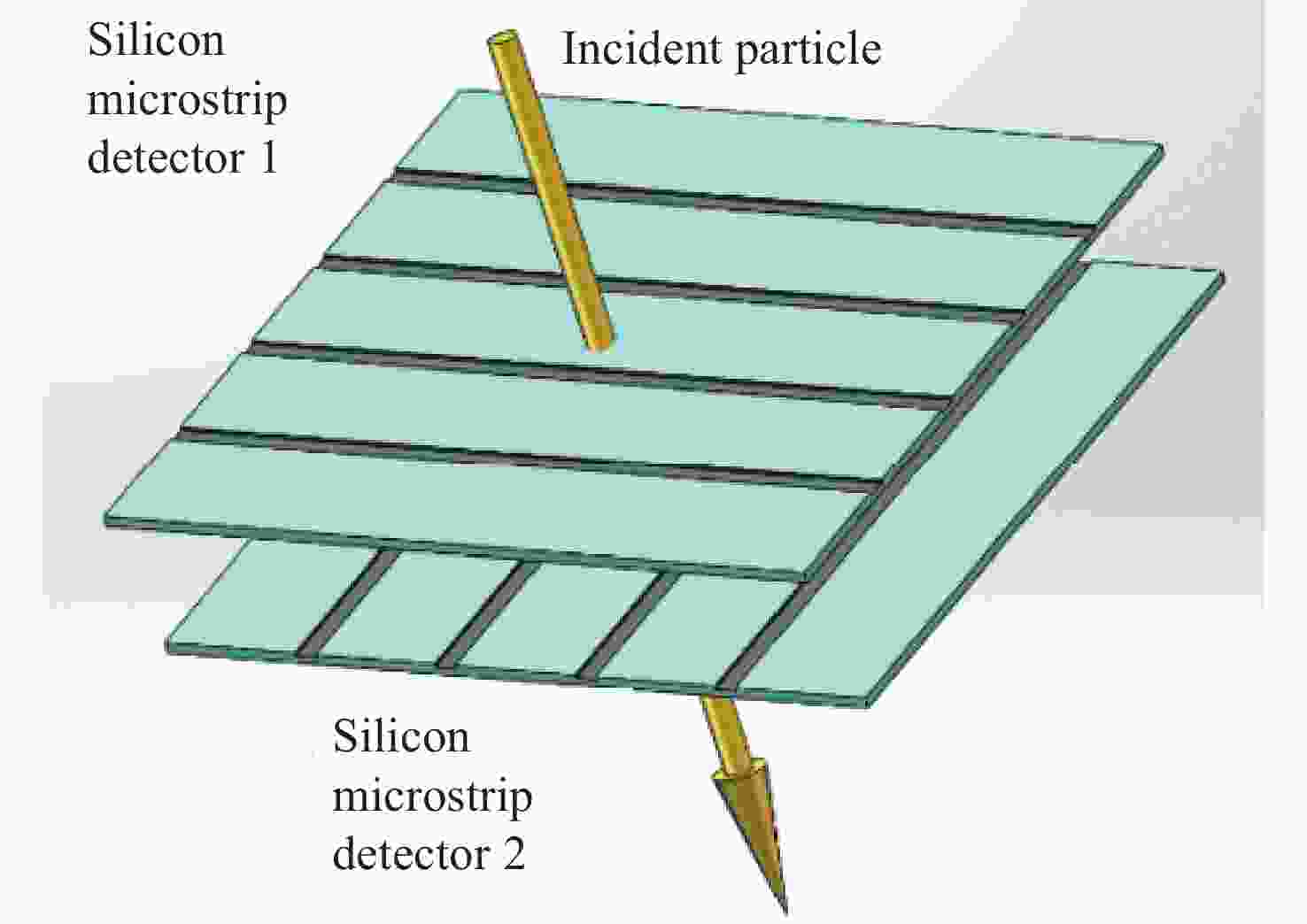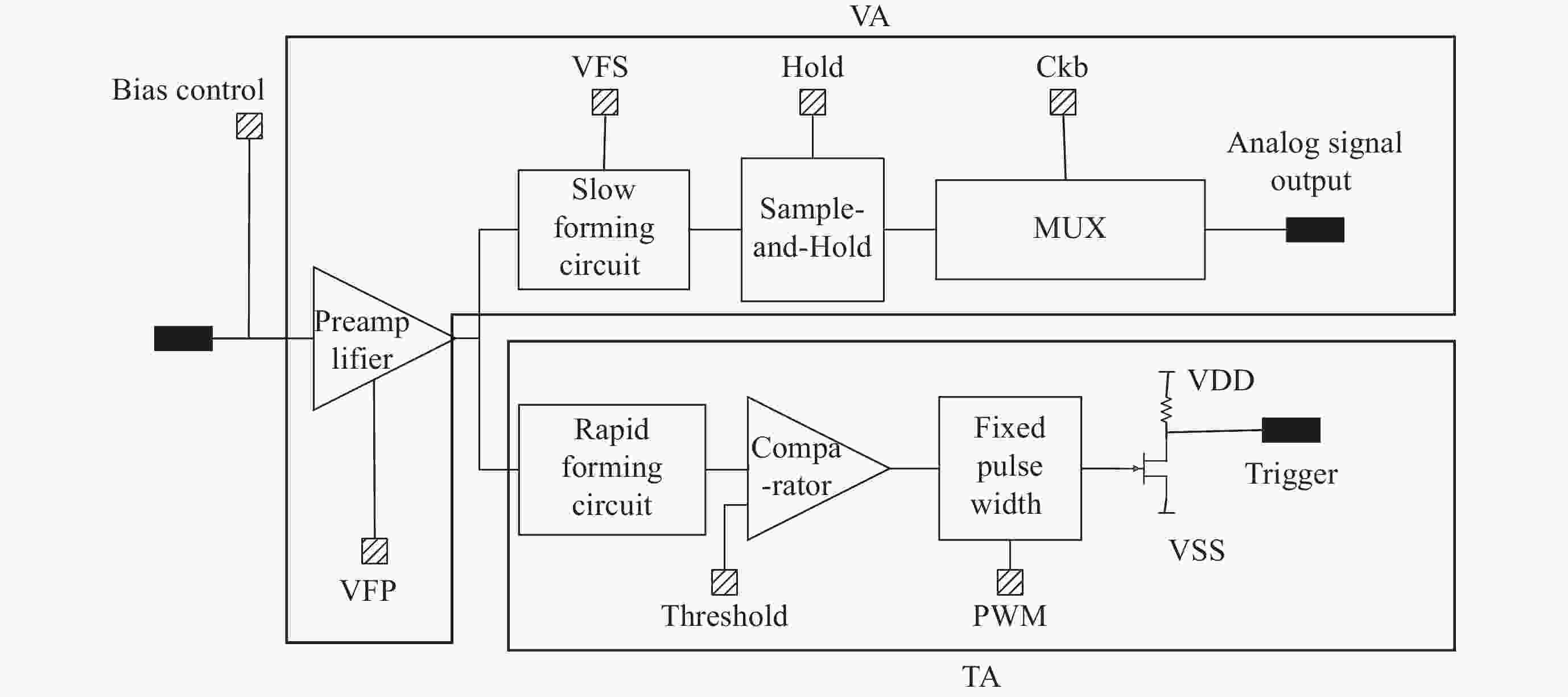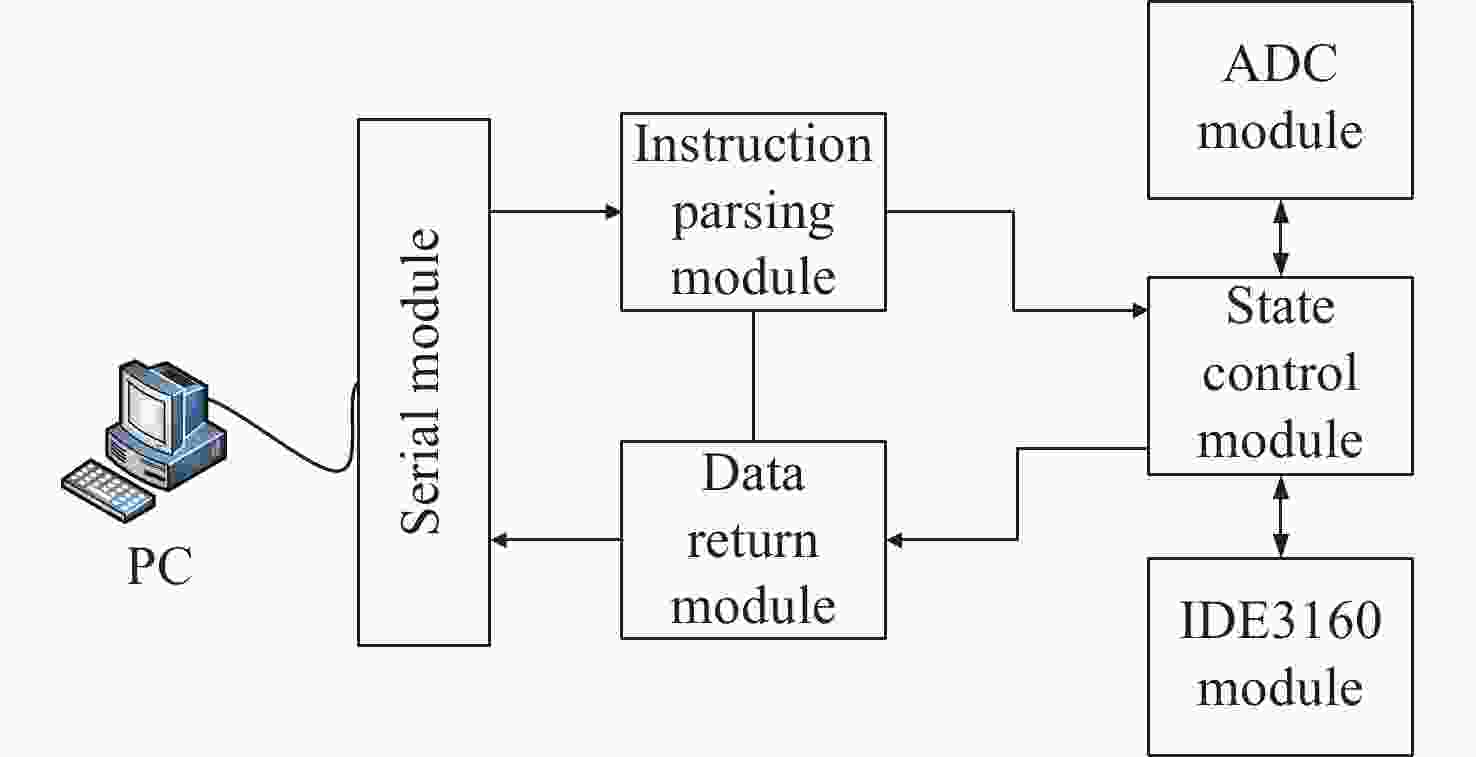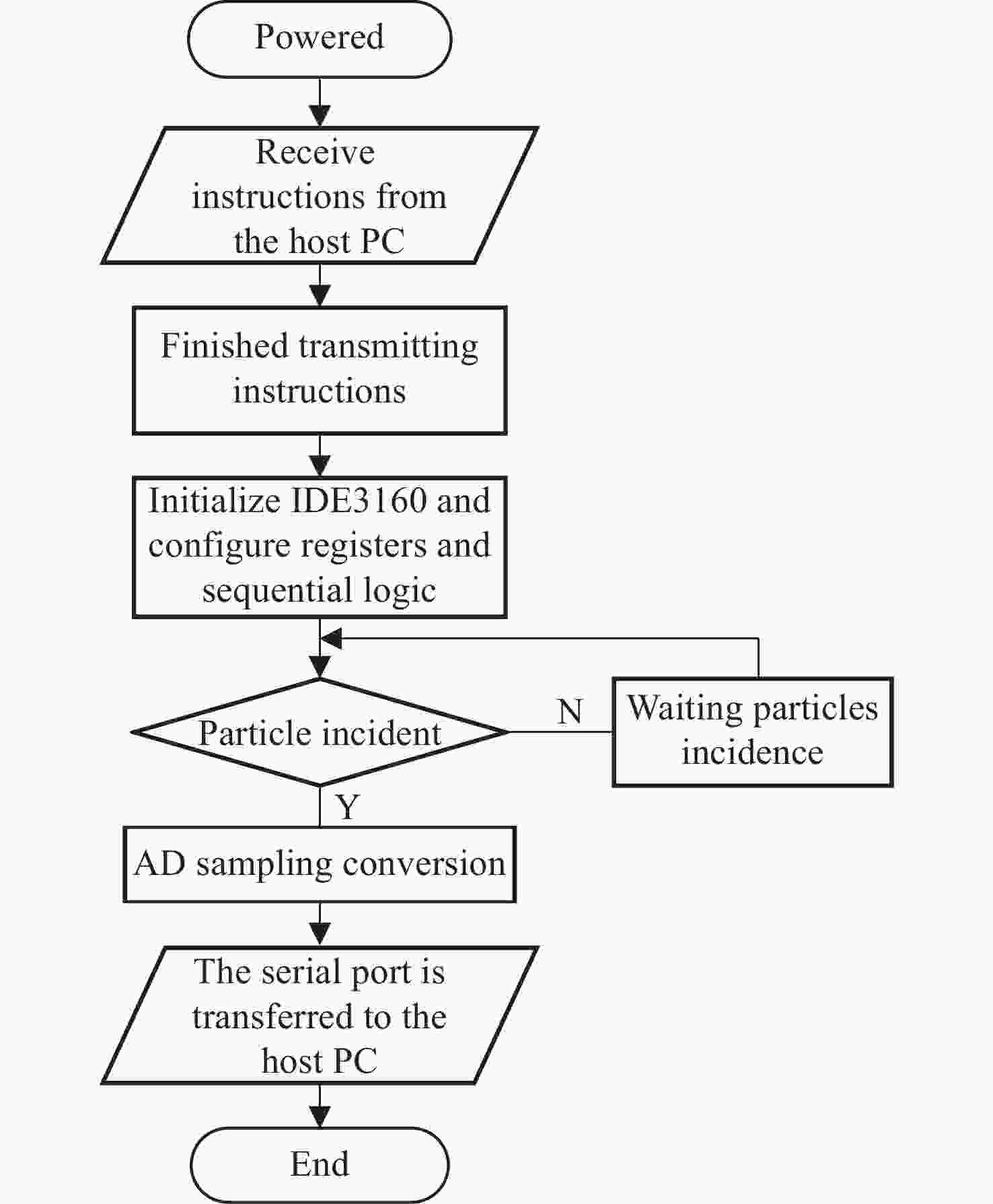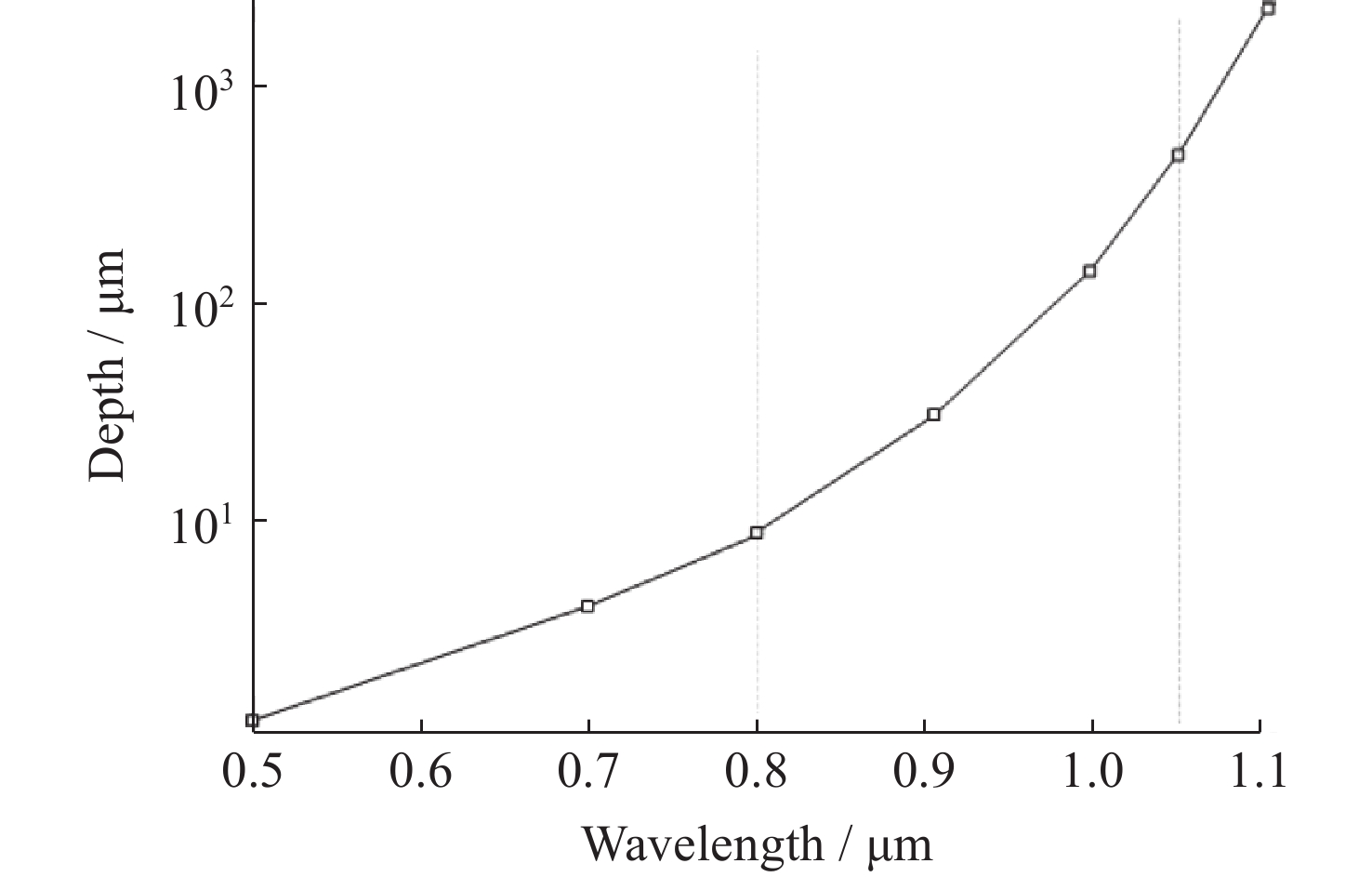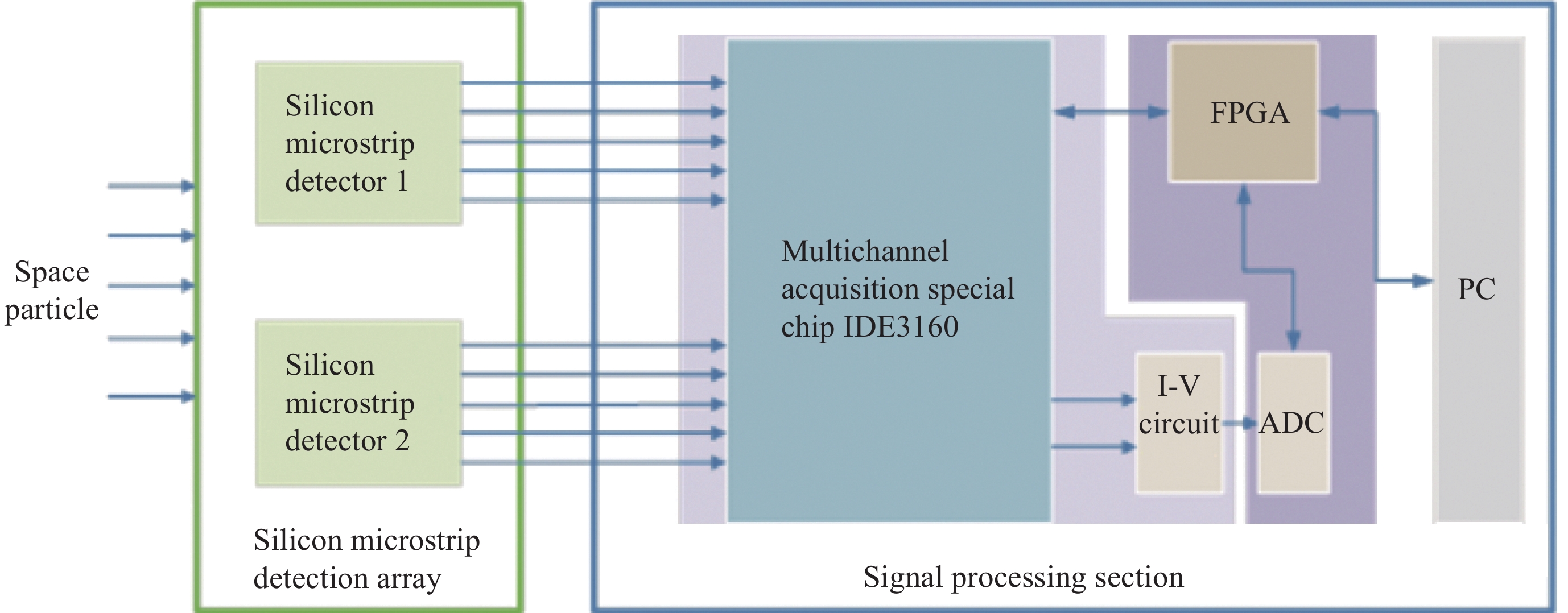Design and Verification of Multi-detection Unit Based on ASIC Chip
-
摘要: 以空间辐射环境中的粒子为研究目标, 研制了用硅微条传感器作为探头、用集成芯片IDE3160进行信号处理的空间粒子探测系统. 该系统采用两片硅微条传感器组成的硅微条探测阵列作为前端探头, 并应用数字化的信号处理方法, 获取空间粒子入射的位置及在硅微条内单位长度沉积的能量(线性能量传递, LET). 从诱发单粒子效应的物理机制角度, 对比重离子和脉冲激光在硅半导体中所产生物理效应的不同. 采用1.064 μm脉冲激光开展系统测试, 获得良好的LET线性结果: 该系统数据采集所需时间为2.47 ms, 可探测到的LET阈值约为0.1 MeV·cm2·mg–1, 皮尔逊相关系数(PCC)达0.998, 表明系统测量结果与理论设计符合性良好. 该系统动态范围宽、线性度好, 具有较高的集成度、可拓展性及可移植性, 可以搭载在各种空间探测卫星上.Abstract: Taking particles in space radiation environment as the research background, the space particle detection system using silicon micro-strip sensor as the probe and integrated chip IDE3160 for signal processing is developed. The system is designed by using silicon micro-strip detection array, which is composed of two silicon micro-strip sensors as the front-end probe, and using digital signal processing method to obtain the position of space particle incident and the energy deposited in the unit length (Linear Energy Transfer, LET) in the silicon micro-strip. From the perspective of the physical mechanism inducing single particle effects, the physical effects produced by contrasting heavy ions and pulsed lasers in silicon semiconductors are different. Pulsed laser of 1.064 μm was used to test the system, and good LET linearity results were obtained: The time required for data acquisition is 2.47 ms, the detectable LET threshold is about 0.1 MeV·cm2·mg–1 and the Pearson correlation coefficient is about 0.998, indicating that the system measurement is in good agreement with the theoretical design. The system has a wide dynamic range, good linearity, high integration, scalability and portability, and can be mounted on a variety of space exploration satellites.
-
表 1 IDE3160主要参数
Table 1. Parameters of the IDE3160
参数 典型值 通道数 32 动态范围/pC –5 ~ +13 等效噪声电荷/pF–1 3516+7.6 差分输出增益/(μA·Fc–1) 0.14 功耗/mW 203 表 2 硅半导体和激光脉冲的参量
Table 2. Parameters for calculating the equivalent LET value of the laser pulse
λ/μm η α/cm–1 Eion/eV $\rho /(\mathrm{m}\mathrm{g}\cdot {\mathrm{c}\mathrm{m} }^{-3})$ 1.064 0.2675 10 3.6 2330 -
[1] HOLMES-SIEDLE A, ADAMS L. Handbook of Radiation Effects[M]. Oxford: Oxford University Press, 1993 [2] WANG Xiaohai. Development status and trend of space environment detection technology[J]. Satellite & Network, 2015(8): 60-65 doi: 10.3969/j.issn.1672-965X.2015.08.014 [3] YE Zonghai. Space Particle Radiation Detection Technology[M]. Beijing: Science Press, 1986 [4] CHENG Yumin, LAN Xiaofei, SHI Zongren, et al. Development of space charged particle detection system of telescope style[J]. Spacecraft Environment Engineering, 2016, 33(4): 364-369 doi: 10.12126/see.2016.04.005 [5] SPIELER H. Front-end electronics and trigger systems—Status and challenges[J]. Nuclear Instruments and Methods in Physics Research Section A: Accelerators, Spectrometers, Detectors and Associated Equipment, 2007, 581(1/2): 65-79 [6] FRIEDL M, IRMLER C, PERNICKA M. Readout of silicon strip detectors with position and timing information[J]. Nuclear Instruments and Methods in Physics Research Section A: Accelerators, Spectrometers, Detectors and Associated Equipment, 2009, 598(1): 82-83 [7] CAMPABADAL F, FLETA C, KEY M, et al. Design and performance of the ABCD3 TA ASIC for readout of silicon strip detectors in the ATLAS semiconductor tracker[J]. Nuclear Instruments and Methods in Physics Research Section A: Accelerators, Spectrometers, Detectors and Associated Equipment, 2005, 552(3): 292-328 [8] TENG Yang. The Design and Implementation of Space Particle Detection System[D]. Harbin: Harbin Engineering University, 2015 [9] YANG Chuibai, ZHANG Kunyi, WANG Yue, et al. On overview of utilization of semiconductor detector in space particles measurements[C]//Proceedings of the 26 th National Conference on Space Exploration, Space Exploration Committee of Chinese Society for Space Science. Qionghai: Chinese Society of Space Science, 2013: 562-567 [10] 任益文, 郭建华, 汪慎. 基于VA32 TA5电荷测量系统的设计和实现[J]. 空间科学学报, 2016, 36(3): 395-400 doi: 10.11728/cjss2016.03.395REN Yiwen, GUO Jianhua, WANG Shen. Design and realization of charge measurement system based on VA32 TA5[J]. Chinese Journal of Space Science, 2016, 36(3): 395-400 doi: 10.11728/cjss2016.03.395 [11] ZHAO Hongyun. The Research and Implementation of the Readout System for A New Plastic Scintillator Array Detector[D]. Lanzhou: Institute of Modern Physics, Chinese Academy of Sciences, 2015 [12] YANG Haibo. Signals Reading Method and Circuit Design for Multiple Detection Unit Based on the Advanced ASIC Chips[D]. Lanzhou: Institute of Modern Physics, Chinese Academy of Sciences, 2015 [13] ARAKCHEEV A, AULCHENKO V, KUDRYAVTSEV V, et al. Operation of silicon microstrip detector with integrating readout for fast time-resolved experiments[J]. Journal of Instrumentation, 2020, 15(6): C05065 [14] ZHANG Xin, XU Wanqiu, BAI Chaoping, et al. The invention relates to a silicon micro-strip detector reading circuit and reading method: China, 112649833 B[P]. 2023-02-17 [15] XU Wanqiu. Design and Implementation of Silicon Micro-Strip Detection System[D]. Beijing: National Space Science Center, Chinese Academy of Sciences, 2021 [16] TORSTI J, VALTONEN E, LUMME M, et al. Energetic particle experiment ERNE[J]. Solar Physics, 1995, 162(1/2): 505-531 [17] WIEDENBECK M E, CHRISTIAN E R, COOK III W R, et al. Two-dimensional position-sensitive silicon detectors for the ACE solar isotope spectrometer[C]//Proceedings of SPIE 2806, Gamma-Ray and Cosmic-Ray Detectors, Techniques, and Missions. Denver: SPIE, 1996 [18] STONE E, COHEN C M S, COOK W R, et al. The cosmic-ray isotope spectrometer for the advanced composition explorer[J]. Space Science Reviews, 1998, 86(1/2/3/4): 285-356 [19] COOK W R, CUMMINGS A C, CUMMINGS J R, et al. MAST: a mass spectrometer telescope for studies of the isotopic composition of solar, anomalous, and galactic cosmic ray nuclei[J]. IEEE Transactions on Geoscience and Remote Sensing, 1993, 31(3): 557-564 doi: 10.1109/36.225522 [20] HAN Jianwei, SHANGGUAN Shipeng, MA Yingqi, et al. Research progress for single event effects of space payloads by pulsed laser simulation[J]. Journal of Deep Space Exploration, 2017, 4(6): 577-584 doi: 10.15982/j.issn.2095-7777.2017.12.012 [21] HUANG Jianguo, HAN Jianwei. The mechanism for SEU simulation by pulsed laser[J]. Science in China Series G: Physics, Mechanics and Astronomy, 2004, 47(5): 540-549 doi: 10.1360/03ye0274 [22] QIAO Kai, GAO Chao, GAO Xiujuan, et al. Discussion on the laser threat and protection system for optical remote sensing satellites[J]. Spacecraft Recovery & Remote Sensing, 2021, 42(2): 59-67 [23] XUE Yuxiong, TIAN Kai, CAO Zhou, et al. An overview of pulsed laser simulation facility for single event effects and testing[J]. Spacecraft Environment Engineering, 2010, 27(3): 304-312 -
-





 张鑫:男, 1977年3月出生于河北省邢台市, 现为中国科学院国家空间科学中心特聘研究员, 空间环境探测总体技术室主任, 主要研究方向为空间天气探测技术研究以及神经网络在空间探测技术中的应用研究等. E-mail:
张鑫:男, 1977年3月出生于河北省邢台市, 现为中国科学院国家空间科学中心特聘研究员, 空间环境探测总体技术室主任, 主要研究方向为空间天气探测技术研究以及神经网络在空间探测技术中的应用研究等. E-mail: 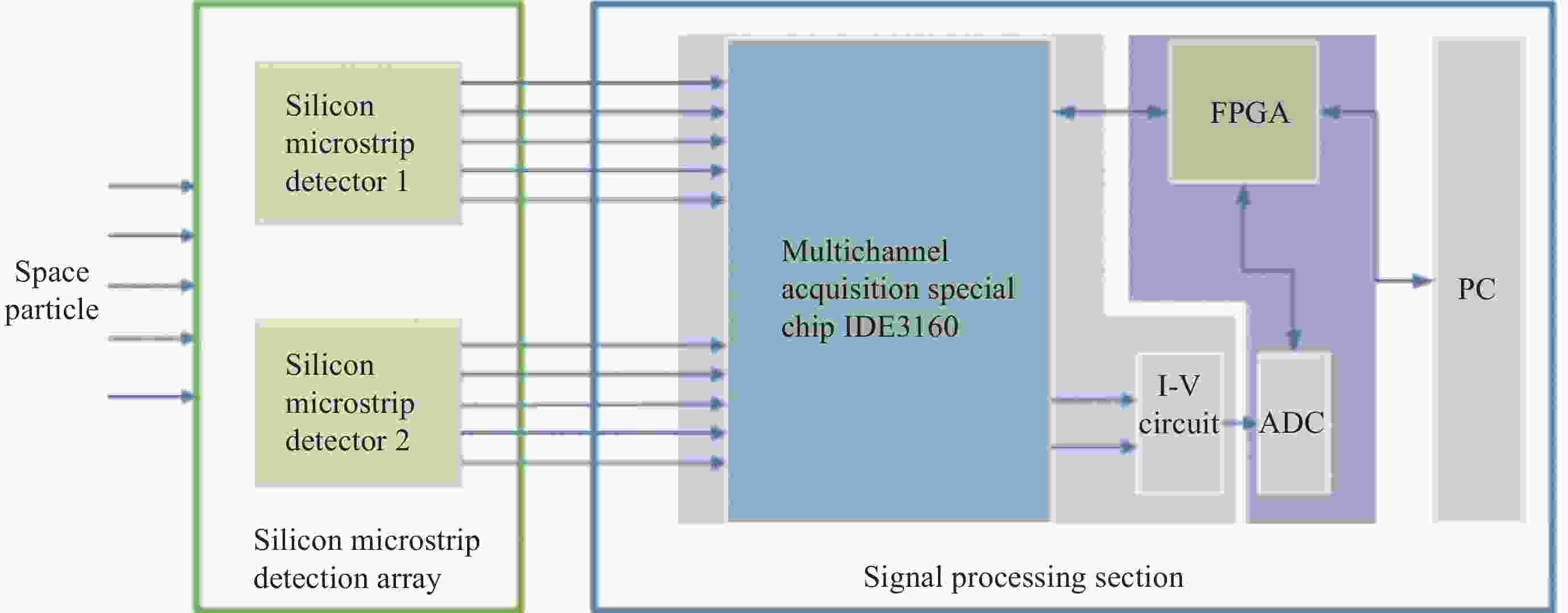
 下载:
下载:
